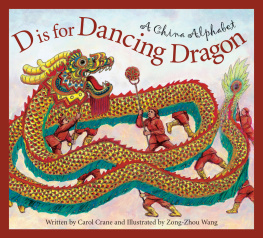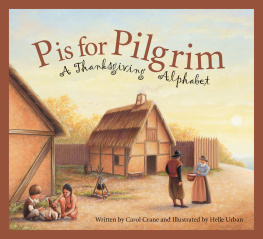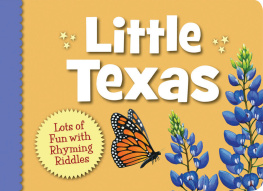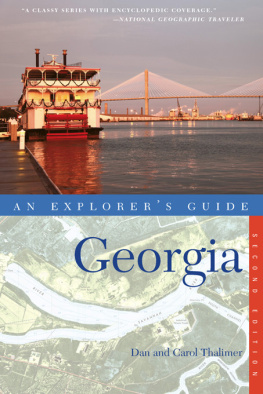P is for Peach
A Georgia Alphabet

Written by Carol Crane Illustrated by Mark Braught
For Conrad, my darling husband,
Judi and Todd Johnston, and Jacob Ward
CAROL CRANE

For my loving wife Laura, my parents Loran and Ruth Braught,
supportive friends and family, Mr. Laska and Mrs. Brentlinger
MARK BRAUGHT
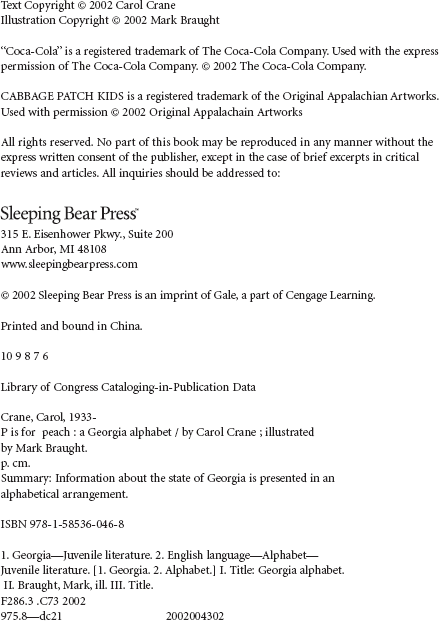
A
The citizens of Dahlonega, Georgia, gave the state a gift of gold in 1958. The precious gold was pounded into sheets and then attached to the dome of the capitol. As years went by the gold flaked and peeled off. Again, the school children and citizens of Dahlonega collected money for gold to gild the capitol dome. Today this gold dome is a shiny greeting for all to see. Miss Freedom, a statue on top of the dome, is 15 feet tall and weighs 2,000 pounds.
Atlanta is home to many famous people, businesses, and historical events. Some of them are: Martin Luther King Jr. National Historic Site; the World of CocaCola; Cable News Network (CNN); Underground Atlanta, which has existed since the Civil War; and Zoo Atlanta.
A is for Atlanta.
It is the capital of our state.
Gold dome we see from afar, where rules and laws we legislate.

B
The brown thrashers verse sounds like, plantaseed, plantaseed; drop it, drop it; coveritup, coveritup; eat itall, eatitall; chewit, chewit. He also makes loud smacks, hisses, and clicks. He has a reddish brown back, heavily streaked whitish underparts that have a buff color on the sides and breast, and yellow eyes. A long curved bill, long tail, and streaked underparts make it different than other thrushes. The mother bird lays three to five pale bluishwhite eggs, which are covered with reddishbrown marks. Mother and father bird share nestbuilding and sitting on the eggs.
B is for the Brown thrasher, our states official bird.
Its voice repeats a verse I think you might have heard.

C
In 1838, after gold was discovered on Cherokee land, the tribe was sent to Oklahoma by order of President Andrew Jackson. The trail was long and hard, especially for mothers with their children. It became known as the Trail of Tears. A legend is told that a beautiful rose grew along the trail to lift the spirits of the sad mothers. Wherever a tear fell to the ground, a rose grew. The gold center of the rose stands for the gold taken from the Cherokee lands. Seven leaves on the stem of the flower represent the seven Cherokee clans that made the journey.
In 1979, the azalea was chosen as Georgias state wildflower. When riding along mountain roads or busy highways, this flower with bright colored blossoms welcomes us.
C is for the Cherokee rose, a gold center in a ring of pure white.
It is the official flower of our state, representing the Cherokee mothers plight.

D
A worldwide carpet industry grew from the creation of a simple wedding gift. Catherine Evans Whitener was just a teenager in 1895 when she thought to use an old techniquehandtufted embroidery known as candlewickto make a bedspread as a gift. A family friend saw the bedspread and paid Catherine to make another one like it. Demand for the bedspreads grew into the early twentieth century and Catherine began involving other local women to help her make more. An entire tufting industry grew out of this demand and helped many Georgia families survive through the Depression.
The most popular way to buy a bed spread was along U.S. Highway 41, where they were hung out on clothes lines to dry. This stretch of highway became known as Bedspread or Peacock Alley, after one of the more popular patterns. After World War II, new machines made the tufting process easier and production shifted from spreads to rugs. Dalton has remained on top as the worlds largest carpet manufacturer, producing more than 80% of Americas carpeting.
Now, D is for Dalton, where the carpeting industry began.
Started by a Georgia woman, tufting and selling bedspreads with a plan.

E
Some of Georgias early Native Americans were mound builders. They built huge mounds of earth with flat tops and used them for temples or burial grounds. The largest of these mounds is 63 feet tall and covers three acres.
The mound builders were great artists. Many necklaces and earrings of shell, copper, and feathers have been found, as well as stone statues. They traded with other tribes using the Etowah River to travel to New Orleans in the south, and samples of their work have been found as far north as Wisconsin. These mounds are a reminder of Georgias early history. You can visit them in Cartersville.
E is for the Etowah Indian Mounds, a symbol of Native Americans from long ago.
They lived and traveled afar, on rivers meeting other tribes they did not know.

F
It was the dream of one member of the Fernbank family to save, protect, and start a school for children. The Fernbank Science Center and the Fernbank Museum of Natural History are located in one of the last remaining old forests, where Creek Indians once lived. These sixtyfive acres have become an oasis from the sounds of busy Atlanta. There are nature trails for finding all kinds of animals and flowers, one of the largest planetariums in the country, a seashell display, a dinosaur exhibit, and the real Apollo 6 capsule. There is also a major exhibit called A Walk Through Time in Georgia.
F is for the Fernbank Science Center.
It was one familys dream a school where children can learn, in a forest and science theme.

G
Juliette Gordon Low was born in Savannah, Georgia, in 1860. While visiting in England, she became interested in a group called the Girl Guides. She thought girls in America might like to belong to such a group. When she arrived back in America in 1912, she started Americas first Girl Guides. Eighteen girls were in the first troop and the girls were required to make peppermint drops, light a fire with a single match, and learn to tie knots. She soon changed the name to Girl Scouts. Lows birthplace on Bull Street in Savannah became the citys first National Historic Landmark, which is maintained by the Girl Scouts of America today.


